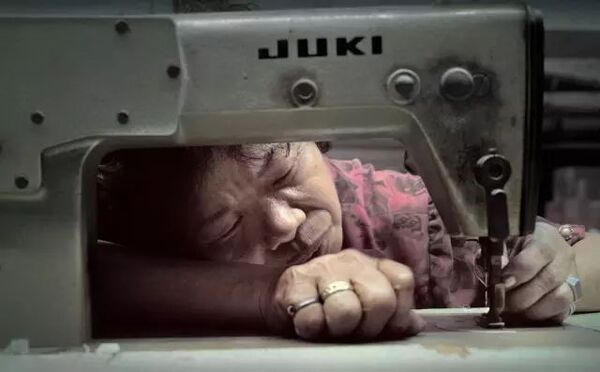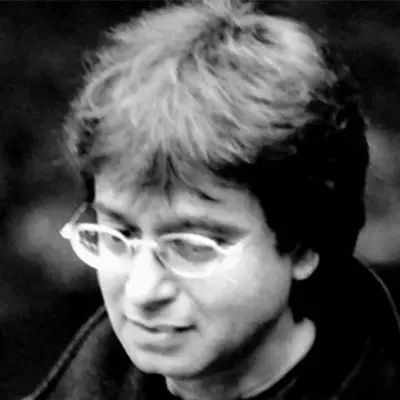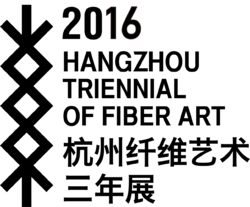
Textile Thinking
2016 The 2nd Hangzhou Fiber Art Triennial International Seminar
Time: September 26-28, 2016
Venue: Zhejiang Art Museum, Hangzhou
International Symposium/Textile Thinking
The theme of the Second Hangzhou Triennial of Fiber Art is “Weaving & We”. If we look at this theme from the perspective of fiber art, the key word will be “weaving”, and if we view it from the perspective of the Triennial’s perspective, the key word will be “we”. By using the phrase “Weaving & We”, we aim to consider the issues of existence and perception through “weaving”--the most basic and popular means in the field of fiber art. The word “we” is not a medium here but a subject full of active con-sciousness.
German architect Gottfried Semper once said: “In the beginning there was textile art.” From his words, we feel that “weaving”, the fundamental work of
humankind, has been upgrading accompanied by the evolvement of humankind. The appearance of the word “weaving” stands for the birth of “labor”; the existence of “weaving” is a sign for the existence of humankind; the development of “weaving” represents the pro-gress that humankind has made.

Chen Chieh-Jen , Factory , Video , 31'09'', 2003
No matter in what language, the meaning of “weaving” has already gone beyond the traditional weaving practice, pointing to all intricated and complicated things. The object of weaving can be not only such concrete things as silk, linen, bamboo, rattans, hairs, bodies, commodities and constructions but also some abstracts such as thoughts, emotions, languages, words, identities and interests. Besides, the object can be culture, art, production, life, location and history that created by the mix and crash of both concrete and abstract things.
On the basis of understanding the word “weaving” literally and extensively, we set the theme of the International Symposium of the 2nd Hangzhou Triennial of Fiber Art 2016 as “Textile Thinking”. This theme is neither certain specific history or story pre-senting in textiles, nor the statement or expression through the practice of weaving, the mechanism and cultural implication behind the narration of textiles. Actually, the theme denotes the complex but orderly thinking and questioning, just like textiles. The words “I think, therefore I am” provide a way to respond “existence” with “think-ing”, which is the most powerful illustration for the themes “Textile Thinking” and “Weaving & We”.
1- Keynote Speech: Thinking Through Textile

Speaker: Sarat Maharaj
Sarat Maharaj was born in apartheid South Africa. From the year 1980 to 2005, he was Professor of Art and Art Theory in Goldsmiths College, Universi-ty of London. Currently, he is a visiting research professor in Goldsmiths and Professor of Visual Arts and Knowledge Systems at the Malmö Art Academy at Lund University in Sweden. Sarat focuses mainly on Marcel Duchamp, James Joyce and Richard Hamilton. His writings include: visual arts as well-or not well-organized knowledge; textile, foreign phonetics and cultural transla-tion; non-western modernity and other sociological studies. Besides, he is the organizer and curator of a series of new media art labs and contemporary vis-ual arts exhibitions, boosting the reformation of European art research. He once held the post of initiator and academic member of the Gothenburg Bien-nale and the São Paulo Biennale, as well as the curator of the 9th Kassel Documenta.
Prof. Maharaj’s thoughts over textiles began in 1980s. From the perspective of materials and images, he takes textiles as art production and cultural rep-resentation, and takes the creation with textiles as the production of knowledge. This will be the first time for Prof. Maharaj to talk about textiles on the platform
2-Discussion:Gao Shiming, Sarat Maharaj, Xu Jiang

The Contexts and Pragmatics of Fiber Art
This series of talks plans to invite museums, research institutes with important textiles and fiber art collections or related works to introduce their collections, historical studies and recent projects. Based on the fact that the 2nd Hang-zhou Triennial of Fiber Art aims to promote the creationand collection of fiber art works, these talks will create a fiber art platform of “launch-research-exhibition-collection”. On one hand, it will help to deepen the exhibitions of contemporary art related to textiles and fiber, on the other hand, it will fuel the cultural and intellectual in-depth development in the industry. As a beginning, these talks will depict a general history and vision for contemporary art through the collections and studies of the museum.
Fiber Art Cartography: Experience in China
Host: Liu Xiao, curator of the 2nd Hangzhou Triennial of Fiber Art 2016
The geographical relationship is the first reason why the Triennial of Fiber Art is being discussed at present on the stage of art. 20 years ago, we might dis-cuss the problems resulted from urbanization in China whereas when it comes to experience in China today, the world attention is paid not only o Beijing, Shanghai, Guangzhou and Shenzhen but also to local places with more cultural cores and more concrete experience. Such experience in China is mostly proposed by younger researchers. For one thing, we dismantle the entrenched history while for another, we present new problems and new vi-sions with practices in order to open the experience in China.
- Xu Jia: The Story of Embroidery: Embroiderers & Skills
- Zhang Yuling: Peony in Chinese Textile
3. Chen Haoru: Weaving & Architecture
Weaving Memory
Host: Sun Zhenhua, theorist, curator
Based on the practices of artists towards textiles, this part reveals how textiles and fibers become the carrier of memories of the artists’ inner world, on the individual and of the society, and how textiles wake up our thinking on the tactile sense related to art.
- Hew Locke
- Hu Xiaoyuan
- Kimsooja
Panelist: Janis Jeffries (writer, educator and curator), Cao Dan (Publisher of Leap and TANC)
Round Table Talk
Futures of Our Work
Host: Yang Zhenyu, Director of the School of Humanism and Art
History, Chi-na Academy of Art
Assadour Markarov--artist, educator and curator of the 2nd Hangzhou
Trien-nial of Fiber Art.
Sun Zhenhua--curator and writer, Chief Editor of China Sculpture Magazine.
Shi Hui--artist, educator and curator, Artistic Director of Hangzhou Triennial of Fiber Art.
Shan Zeng--artist, educator and curator, Director of the School of Art
Man-agement and Education, China Academy of Art.
Angelika Li--Director of the MILL6 Foundation.
Mizuki Takahashi--Senior Curator, MILL6 Foundation.
Marta Kowalewska--PhD and writer on Polish fiber art history.
Michal Jachula--writer and curator.
Grant Watson--curator and researcher based in London.
Jessica Hemmings--writer, educator and curator, Chief Editor of Cultural Threads.
Janis Jeffries--writer, educator and curator, Professor of Visual Arts,Gold-smiths College.
Xu Jia--curator of the 2nd Hangzhou Triennial of Fiber Art.
Liu Xiao--curator of the 2nd Hangzhou Triennial of Fiber Art.
Li Wen—director of Education Department of Zhejiang Art Museum.
Sandy Hsiuchih Lo--curator and writer.
Chen Yiming--Deputy Editor of Artron Art Net.
September 26th, 14:00-17:30
Opening Speech:Prof. Shi Hui, Artistic Director of 2nd Hangzhou Triennial of Fiber Art
1-Keynote Speech: Thinking Through Textile
Speaker: Sarat Maharaj
September 27th, 9:00-12:00
2. Discussion:Gao Shiming, Sarat Maharaj, Xu Jiang
The Contexts and Pragmatics of Fiber Art
9:00-10:15
Researchers’ Works
Host: Guo Xiaoyan, Deputy Director of Beijing Minsheng Art Museum
- Jessica Hemmings, writer, educator and curator, Chief Editor of Cultural Threads
- Michal Jachula, writer and curator
- 3. Sandy Hsiuchih Lo, curator and writer
10:30-12:00
The Contexts and Pragmatics of Fiber Art
Host: Hang Jian, director of International Design Museum, Hangzhou
- Brenda Danilowitz, Chief Curator of Josef and Anni Albers Foundation
- Edith Cheung Sai May, textile educator, researcher and writer
- Angelika Li, Director, MILL6 Foundation
September 27th, 14:00-17:30
14:00-15:15
Fiber Art Cartography: Experience in China
Host: Liu Xiao, curator of the 2nd Hangzhou Triennial of Fiber Art 2016
- Xu Jia: The Story of Embroidery: Embroiderers & Skills
- Zhang Yuling: Peony in Chinese Textile
- Chen Haoru: Weaving & Architecture
15:30-17:30
Weaving Memory
Host: Sun Zhenhua, theorist, curator
- Hew Locke
- Hu Xiaoyuan
- Kimsooja
Panelist: Janis Jeffries (writer, educator and curator), Cao Dan (Publisherof Leap and TANC)
September 28th, 9:00-12:00
Round Table Talk
Futures of Our Work
Host: Yang Zhenyu, Director of the School of Humanism and Art History, Chi-na Academy of Art
Assadour Markarov--artist, educator and curator of the 2nd Hangzhou Trien-nial of Fiber Art.
Sun Zhenhua--curator and writer, Chief Editor of China Sculpture Magazine.
Shi Hui--artist, educator and curator, Artistic Director of Hangzhou Triennial of Fiber Art.
Shan Zeng--artist, educator and curator, Director of the School of Art
Man-agement and Education, China Academy of Art.
Angelika Li--Director of the MILL6 Foundation.
Mizuki Takahashi--Senior Curator, MILL6 Foundation.
Marta Kowalewska--PhD and writer on Polish fiber art history.
Michal Jachula--writer and curator.
Grant Watson--curator and researcher based in London.
Jessica Hemmings--writer, educator and curator, Chief Editor of Cultural Threads.
Janis Jeffries--writer, educator and curator, Professor of Visual Arts,Gold-smiths College.
Xu Jia--curator of the 2nd Hangzhou Triennial of Fiber Art.
Liu Xiao--curator of the 2nd Hangzhou Triennial of Fiber Art.
Li Wen—director of Education Department of Zhejiang Art Museum.
Sandy Hsiuchih Lo--curator and writer.
Chen Yiming--Deputy Editor of Artron Art Net.



